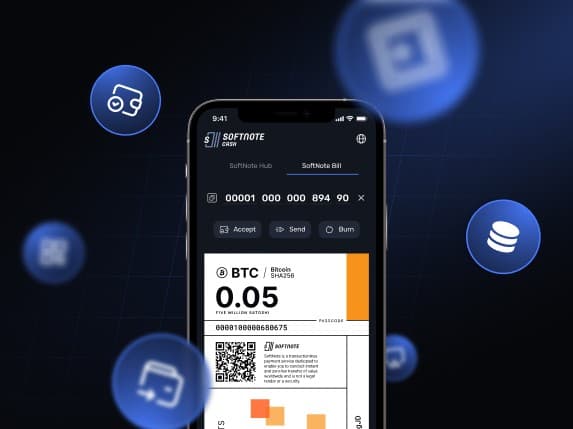Contrary to popular opinion, all crypto cross border payments are not the same. Unlike traditional payment gateways, they have different ways of processing transactions. For a better understanding, let’s examine what cryptocurrency payment methods are.
What are Crypto Cross Border Payments?
Crypto cross border payments are international money transfer processors using cryptocurrencies and blockchain technology for transactions. Cryptocurrency in itself has a borderless structure, as the sender and receiver only need blockchain wallets. With crypto wallets, you can send and receive tokens from anyone globally.
Why then do people require crypto for cross border payments if the structure is already borderless? The answer is simple – settlement. While adoption is growing, there is still a long way to go with spending and accepting blockchain tokens. Settlement is the process whereby businesses that accept cryptocurrencies are credited with the amount required.
With proper settlement, business owners do not have to worry about receiving and spending cryptocurrency. Imagine you purchase a pair of shoes from a company in the UAE and pay with USDT or TET. Without settlement, the store owner is tasked with receiving and converting the crypto to fiat. With settlement, the recipient does not have to worry about this process, as they will receive the AED equivalent of the amount that was paid.
Why Cross Border Payments Crypto?

Banks already offer similar services to crypto cross border payments. So why should people consider blockchain payment processors as alternatives? The simple answer is that traditional payment gateways are very inefficient and limited.
Besides adoption (at the moment), crypto cross border payments edges regular banks in the following areas:
- Speed: Cryptocurrency payment processors complete settlements in a few minutes. SWIFT and other traditional methods take at least 24 hours. Sometimes, banks can take between 2–5 days before completing a settlement.
- Cost: Like the sluggish service was not bad enough, people have to pay heavily for it. Imagine paying 5-10% for a transaction that takes 2-5 working days to process? Meanwhile, SoftNote (from Tectum) only charges 0.5%.
- Accessibility: What is the point of a “cross border payment gateway” if it is limited to specific borders? The current payment options are more or less tools for sanctions. Cryptocurrency payment process, on the other hand, are truly borderless. They cater to regions like Africa, Asia, Eastern Europe, etc.
Top 5 Blockchains for Cross Border Payments Crypto
Traditional finance relies on outdated systems like SWIFT, where transfers crawl through multiple banks and borders. With blockchain cross border payments, blockchains act as global highways. Unlike regular banks, they are direct, open, and lightning fast.
Here’s why these five networks stand out for cross-border payments in crypto:
- Ripple (XRP): Built for banks, Ripple settles transactions in 3–5 seconds with fees under $0.0001. Partnering with Santander and SBI Remit, it’s like upgrading from postal mail to instant messaging for global transfers.
- Stellar (XLM): Stellar targets remittances, serving regions like Africa with 5-second finality. A farmer in Kenya can receive euros from France cheaper than using Western Union.
- Solana: With 65,000 transactions per second (TPS), Solana handles high-volume payments for under a cent. Imagine a toll-free 100-lane highway for payroll or vendor settlements.
- Algorand: ESG-focused firms love Algorand’s carbon-neutral, instant transfers. It’s the Tesla of blockchains: fast, green, and corporate-ready.
- Tectum: The cheapest fees and instant settlement via zero-knowledge proofs. Sending $5 to Ukraine costs nothing and arrives faster than a text.
Challenges in Crypto International Payments
Although crypto payment processors solve issues with speed and cost, there are still several hurdles it needs to deal with. Volatility, regulation, and adoption gaps still scare users utilizing this excellent alternative.
Here’s what’s holding back cross border payments crypto:
- Volatility: Crypto’s wild price swings scare businesses. Stablecoins like USDT fix this. A Mexican bakery can accept USD payments without fearing Bitcoin’s 10% daily swings.
- Regulatory Hurdles: Rules vary wildly. The EU’s MiCA framework welcomes crypto, while the U.S. hesitates. Using XRP in Germany? Easy. In Nigeria? Banned, despite 35% crypto adoption.
- Adoption Gaps: Most businesses stick to PayPal or Wise. Convincing a U.S. freelancer to invoice in crypto? Like asking them to swap email for fax machines.
The aspect of adoption and accessibility is instance, as the government seems hell-bent on
Security & Compliance in Blockchain Cross-Border Payment Services

Trust is the bedrock of global finance, especially for crypto cross-border payments. Without robust security and clear rules, even the fastest blockchain falters. In this regard, blockchain payment processors must meet strict security and compliance measures to continue operations:
Here’s how crypto balances innovation with accountability:
- Regulatory Compliance: AML/KYC protocols ensure only legitimate users move funds. Coinbase, for example, uses licensed frameworks to verify identities, much like airport security scans passports before boarding.
- Fraud Prevention: Blockchains are public ledgers where every transaction is traceable. This transparency thwarts common traditional finance scams, like fake invoices or account takeovers. Imagine a thief trying to hide in a glass room.
- Stablecoin Audits: Stablecoins are the bedrock of blockchain cross-border payments. Most businesses accepting digital assets for the first time are more likely to incorporate stablecoins, as they are less volatile. Considering their importance, stablecoins like USDC undergo monthly reserve checks by firms like Grant Thornton. The goal is to ensure the cryptocurrency matches the currency it is pegged to.
Circle’s USDC follows strict U.S. regulations, publishing reserve reports and freezing suspicious wallets. This compliance lets businesses trust USDC for payroll, even across borders.











